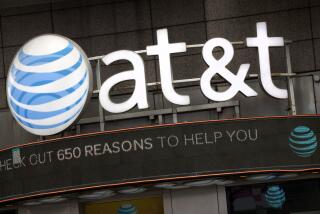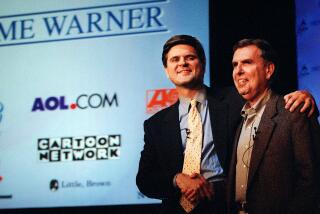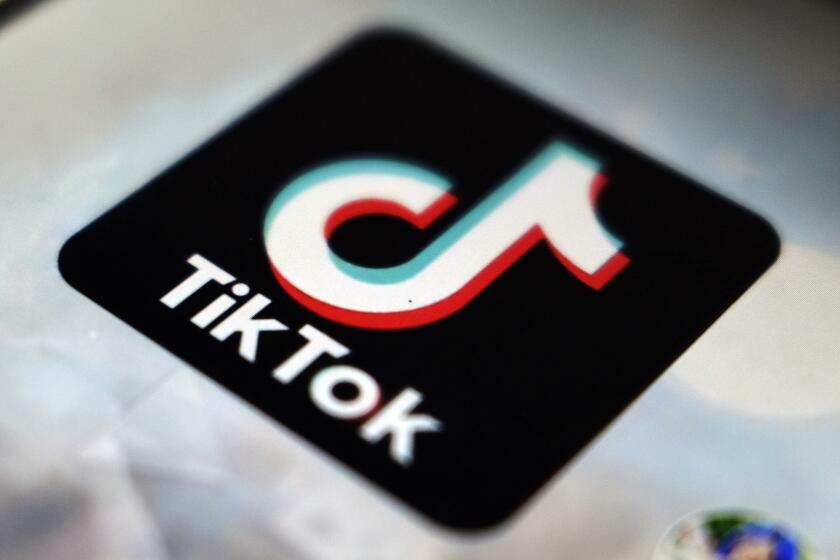AT&T; BREAKUP II : Highlights in the History of a Telecommunications Giant
- Share via
1900 -- AT&T; becomes the parent company of American Bell.
Early 1900s -- Seeking a monopoly, AT&T; refuses to allow rival phone companies to connect to its network until they sell out to AT&T.;
1910 -- AT&T; gains effective control of Western Union, its biggest telephone competitor.
1913 -- Under threat of an antitrust lawsuit, AT&T; agrees to dispose of Western Union stock and not to buy other independent phone companies without government approval.
1919 -- AT&T; is informally recognized as the nation’s telephone monopoly subject to federal regulation.
1956 -- In a controversial decision, the Dwight D. Eisenhower Administration ends a seven-year antitrust suit against AT&T.; By consent decree, AT&T; is allowed to keep its Western Electric manufacturing subsidiary in return for staying out of the computer business.
1969 -- FCC grants application by Microwave Communications Inc. (later MCI) to sell private long-distance lines between Chicago and St. Louis.
1974 -- MCI Communications Corp., and later the Justice Department, sue AT&T; on antitrust grounds.
1980 -- Federal jury in Chicago awards MCI $1.8 billion in antitrust damages from AT&T.;
1981 -- Opening arguments in U.S. vs. AT&T; are made. Defense Secretary Caspar W. Weinberger opposes the AT&T; breakup on national security grounds, but by year’s end AT&T; directors authorize the company to negotiate the breakup of the Bell system.
1982 -- Justice Department and AT&T; sign a landmark agreement breaking up the AT&T; monopoly by allowing long-distance competition and creating seven independent regional phone companies, dubbed the “Baby Bells.”
1984 -- Bell system breakup takes effect. AT&T; retains its Bell Laboratories research arm, Western Electric phone manufacturing arm and long-distance business.
1984 -- AT&T; enters the general-purpose computer business with a line of medium-range computers.
1985 -- In a retrial, MCI is awarded $113 million in antitrust damages from AT&T; instead of $1.8 billion.
1986 -- Plant consolidations and the expense of cutting 27,400 jobs reduce annual profit by $3.2 billion.
1988 -- A $6.7-billion write-down of old equipment causes AT&T;’s first-ever annual loss.
1990 -- AT&T; cuts long-distance rates an average of 2.2%, the 11th decrease since the breakup, for a total of 43%.
1991 -- After five months of negotiations, AT&T; signs a deal to buy computer maker NCR Corp., the former National Cash Register Corp., for $7.4 billion.
1991 -- Annual profit falls 83% due to the cost of a restructuring designed to eliminate 14,000 jobs by 1994 in former NCR businesses and its money-losing phone equipment business. Its long-distance market share, after years of losses to MCI, stabilizes at about 59%.
1992 -- Revenue from computer operations fall, the start of a downtrend.
1993 -- AT&T; signs a deal with China to improve its nationwide phone system.
1993 -- AT&T; agrees to buy McCaw Cellular Communications, the nation’s largest cellular phone company, for $12.6 billion.
1994 -- Company formally changes its name to AT&T; Corp. and reports annual earnings of $4.7 billion, its best year since the breakup.
1995 -- While AT&T; earnings rise with help from McCaw, computer operations continue to lose money.
1995 -- AT&T; announces it will voluntarily break into three companies: long distance-cellular, equipment research and manufacturing, and computers. A separate equipment leasing company will be sold.










